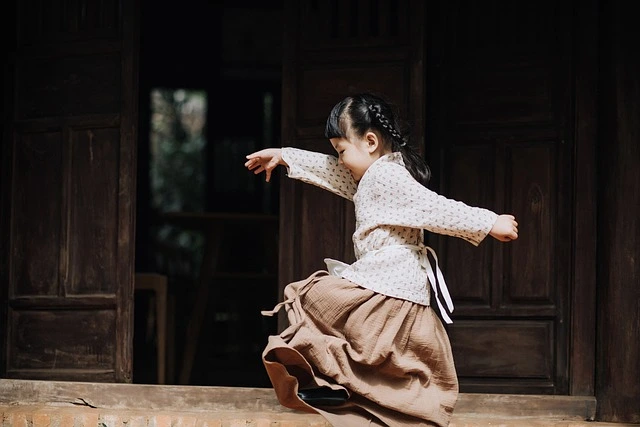What is Breathwork?
Breathwork is a buzzy practice right now, and it feels like there are new breathwork circles and training popping up all over the wellness community.
Breathwork is the intentional use of breath and oxygen to improve physical, mental, and spiritual well-being. There are many breathing techniques and exercises that constitute breathwork, ranging from intentional deep breathing, to holotropic breathing, and more.
Origins of Breathwork
Although recently popularized in the mainstream, breathwork is an ancient practice used by many different civilizations and traditions. Pranayama, literally translating to life force control, is the set of practices derived from ancient India to control prana primarily through breathing. Pranayama as a breathing practice was first referenced in yogic literature (circa 700 BCE) in Brihadaranyaka Upanishad and alluded to the fact of its utility in achieving optimal health. (https://www.gaia.com/article/what-pranayama-history)

Chi, in traditional Chinese medicine alludes to the energy of life and breath, as well as ki in Japan, traditionally harnessed in ancient martial arts, which refers to energy and spirit. Similarly, ancient Greek authorities, such as Homer, Aristotle and Galen, studied breath, or pneuma in Greek, and explored its importance in health, sickness, and how it connects the heart, mind, and brain.
Modern Breathwork Techniques
Wim Hof Method
Wim Hof, also known as the Iceman, helped bring modern breathwork to the map. An extreme athlete, he became well known by breaking records related to cold exposure. Through his training in extreme cold temperatures, he learned to control his breathing, heart rate, and blood circulation and now shares his learnings with the world via the Wim Hof Method. The Wim Hof Method is a “combination of breathing, cold therapy and commitment” that results in many benefits such as better immunity, reduced stress, and increased energy.
His method combines periods of hyperventilation with voluntary breath-holds, to increase oxygen levels.
Wim Hof Method breathing technique (1 round):
- Powerful inhalation through the nose
- Relaxed exhalation through the mouth.
- Repeat for 30 breaths.
- On the 30th breath, exhale to 90 percent and hold for as long as you can.
- When you feel your body really needs to take a breath, inhale fully and hold for 15 seconds before releasing.

Holotropic Breathwork
Using a breathing technique along with music to induce breathers into non-ordinary states of consciousness, Holotropic Breathwork has recently been popularized by many facilitators and participants. Founded by Dr. Stanislav Grof who wanted to find a way to mimic LSD as a healing tool using just the body, Holotropic Breathwork has been used by many to do what he intended and has helped many heal.
During Holotropic Breathwork, the participant lies down and takes deep breaths using diaphragmatic breathing using continuous circular breathing and breathes faster than usual. The participant can breathe either through the mouth or nose, however, many facilitators recommend mouth breathing. Holotropic breathwork is practiced in pairs, where the participant or breather is lying down and the sitter is watching over the breather to make sure they are safe and supported.
Rebirthing Breathwork
Founded by Leonard Orr while taking a bath and using deep breathing, Rebirthing Breathwork is a nasal breathing process using a technique while lying down called ‘conscious connected circular breathing’ enabling the breather to free the self from trauma, repressed memories, and unconscious patterns of behavior, to process emotions towards more joy, peace and happiness.
Through stimulation of the vagus nerve, rebirthing breathwork helps the breather access repressed trauma and experiences while in a calm, altered state of consciousness. The ideology behind rebirthing breathwork stems from the fact that memories are stored in the associative cortex and hippocampus – which communicates to the amygdala, that stores feelings and emotions associated with those memories. When confronted with a new experience, the hippocampus communicates with the amygdala, triggering a search for similar past experiences and similar emotional responses. The amygdala then sends this information to the decision-making part of your brand, the pre-frontal cortex, resulting in decisions that are made relative to emotions from similar past experiences. Decisions then, are a response to feelings, which are reproduced in accordance with our stored experience.
Rebirthing Breathwork helps the breather uncover unconscious patterns of behavior on a cellular level, helping them to understand the feelings and energies stored in the body and how these repressed patterns are manifested through actions and decisions.
A rebirthing breathwork session consists of the breather lying flat on the ground with eyes closed, using a circular breathwork technique with nose inhales and exhales. Initially the breaths are shallow in through the nose and out through the nose without any pauses, and as time progresses the breath should deepend, with the entire session lasting for 1-2 hours.

Transformational Breath
Founded by Dr. Judith Kravitz in 1977, Transformational Breath is a circular breathing method through the mouth without pause, that applies a repetitive and full relaxed breath originating from the lower abdomen, incorporating personal intention and spiritual practices. A session of Transformational Breath begins with Breathing Analysis – where trained facilitators of the methodology correlate breathing patterns to personal life experiences and issues.
The founder, Judith, discovered and founded Transformational Breath via her own healing journey, and is today an established leader in spirituality and metaphysics.
To practice Transformational Breath, the breather inhales deeply through the mouth and exhales without effort through the mouth, without pause in a circular motion, guided by a facilitator who applies various healing modalities including toning, hands-on, and somatic therapies, as well as sound healing, Kundalini yoga and more.
Sacred Breath Method
The Sacred Breath Method is a conscious circular breath technique founded by healer, Kaya Leigh, who founded the practice with a desire to found a practice that was nurturing, mindful of trauma, and gentle yet powerful after years of unethical breathwork encounters. This method follows a circular breathwork technique, without pause between the inhales and exhales, and is practiced lying down. Inhales are conducted through the nose, and exhales through the mouth. It is a trauma informed practice, activating the parasympathetic nervous system, and activates theta and gamma brainwaves for altered states of consciousness. The Sacred Breath technique accesses the subconscious mind in a gentle way, so that the breather can access states of healing, rebalancing, and reclamation in a way that is safe and non-traumatizing.
I am personally trained in the Sacred Breath method, and have achieved profound healing through this method. If you are interested, take a free journey, as the first time is free!
Personalized Breathwork
Besides the breathwork techniques mentioned above, there are many different modalities of breathwork and new techniques continuously emerge. Depending on the individual’s unique needs and preferences, different modalities will resonate better than others. Holotropic Breathwork may feel too intense for the practitioner looking to relax their nervous system, and pranayama breathing during yoga or meditation may be too relaxed for someone looking for a cathartic release. Experiment with different breathwork modalities to see what resonates best with you.







Leave A Comment